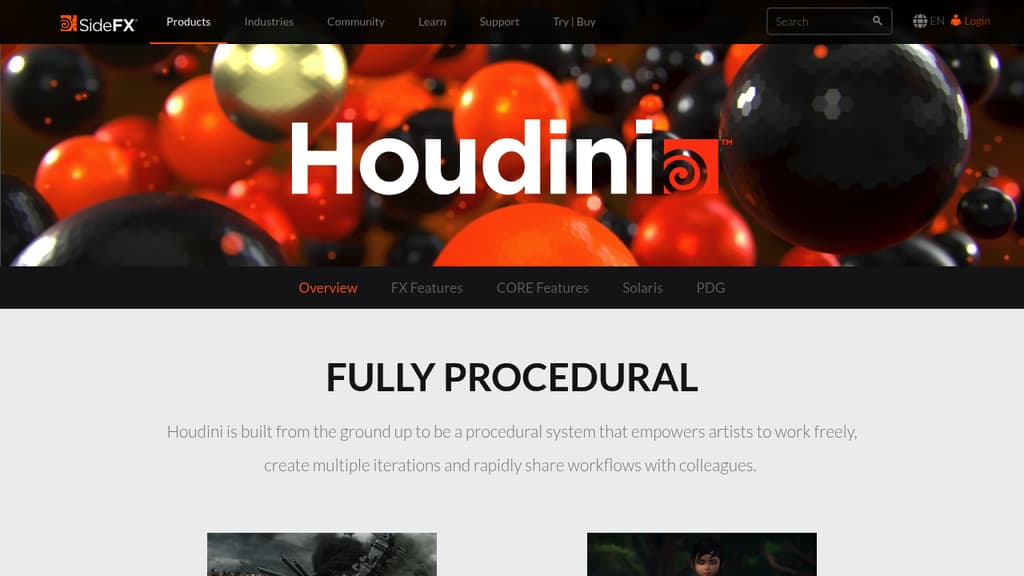Houdini
A procedural system that allows artists to work freely, create multiple iterations, and easily share workflows with colleagues. Ideal for 3D animation and VFX.

Houdini is a procedural system designed for artists working in 3D animation and VFX for Film, TV, and Gamedev. It allows artists to work freely, create multiple iterations, and easily share workflows with colleagues.
Key Features
- Node-based Workflow: Every action is stored in a node, and these nodes are connected into networks. This creates a "recipe" that can be adjusted and repeated for different results.
- Artist-Friendly Tools: Offers intuitive viewport and shelf tools that simplify interactions, while Houdini automatically builds the underlying nodes and networks.
- VFX & Simulation: Ideal for creating complex particle and dynamic simulations, with procedural solutions that automate reactions in visual effects.
- Directability: Allows creative decisions late in production, with changes cascading through the network for unique outcomes.
- Pipeline in a Box: Facilitates the creation of reusable tools, enabling planning and refinement of the production pipeline.
- Robust Asset Creation: Node networks can be encapsulated into custom, shareable nodes, and with Houdini Engine, these assets can be used in other applications like Autodesk Maya, 3ds Max, C4D, UE4, and Unity.
Houdini is used across various industries:
- Film & TV: Create high-quality shots under tight deadlines.
- Gamedev: Build immersive worlds with vast amounts of content efficiently.
- Motion Graphics: Design compelling visuals and dynamic experiences.
- VR: Create and manage content for virtual and augmented reality.
Houdini offers different product versions, including Houdini FX, Houdini Core, Houdini Indie, and Houdini Apprentice, catering to various user needs from commercial projects to personal learning.
Categories: